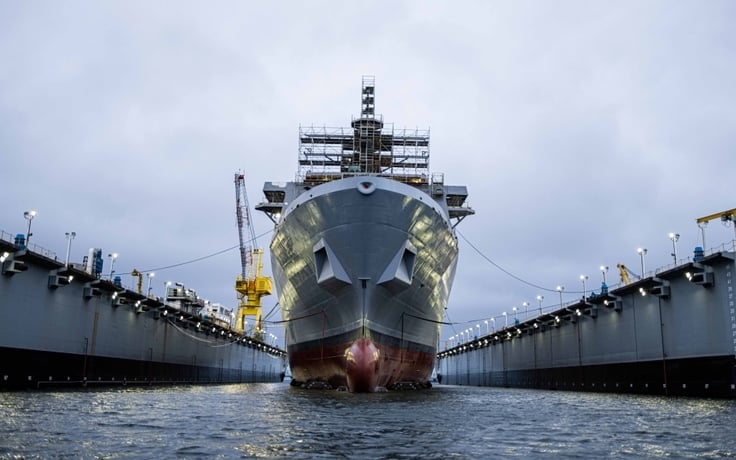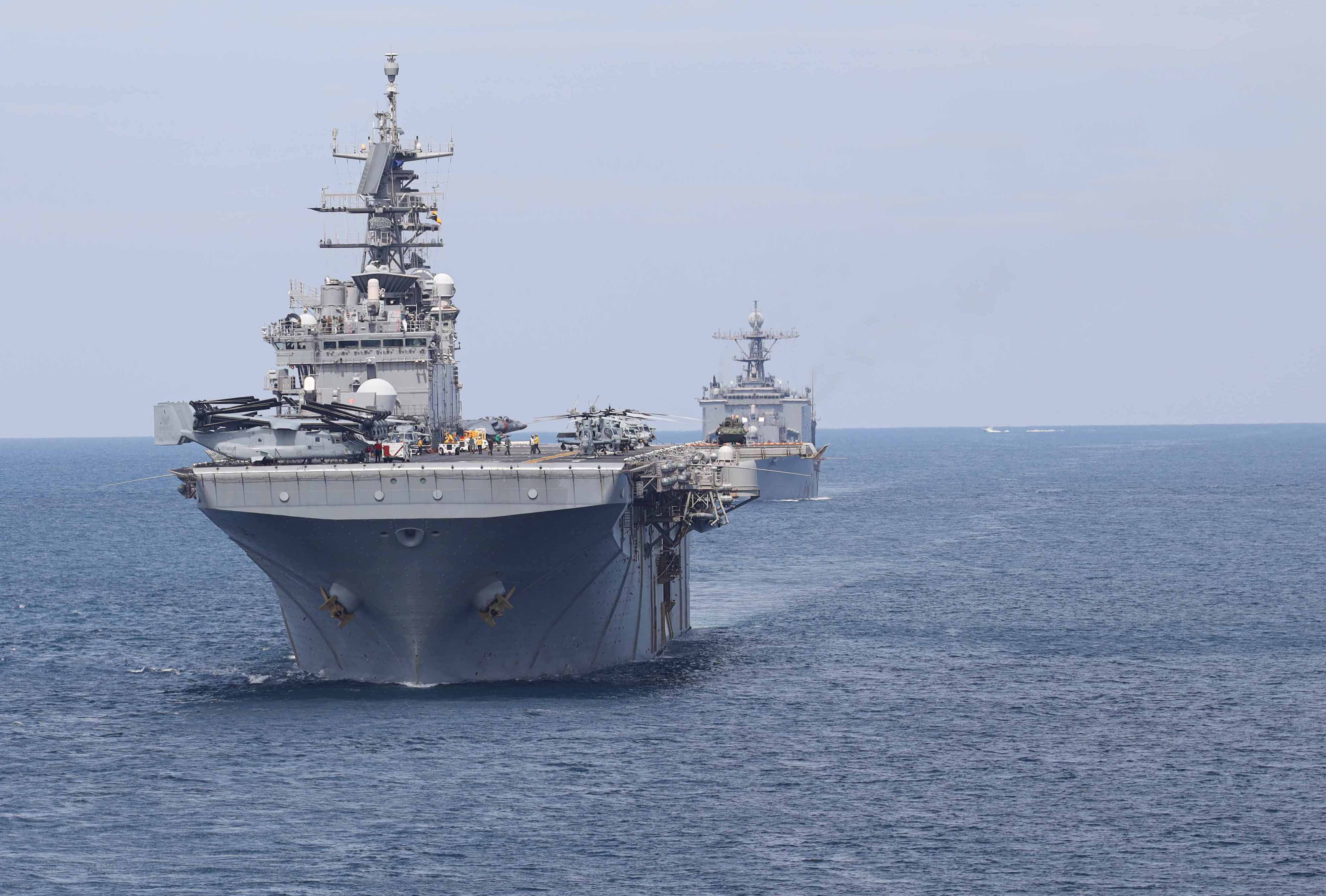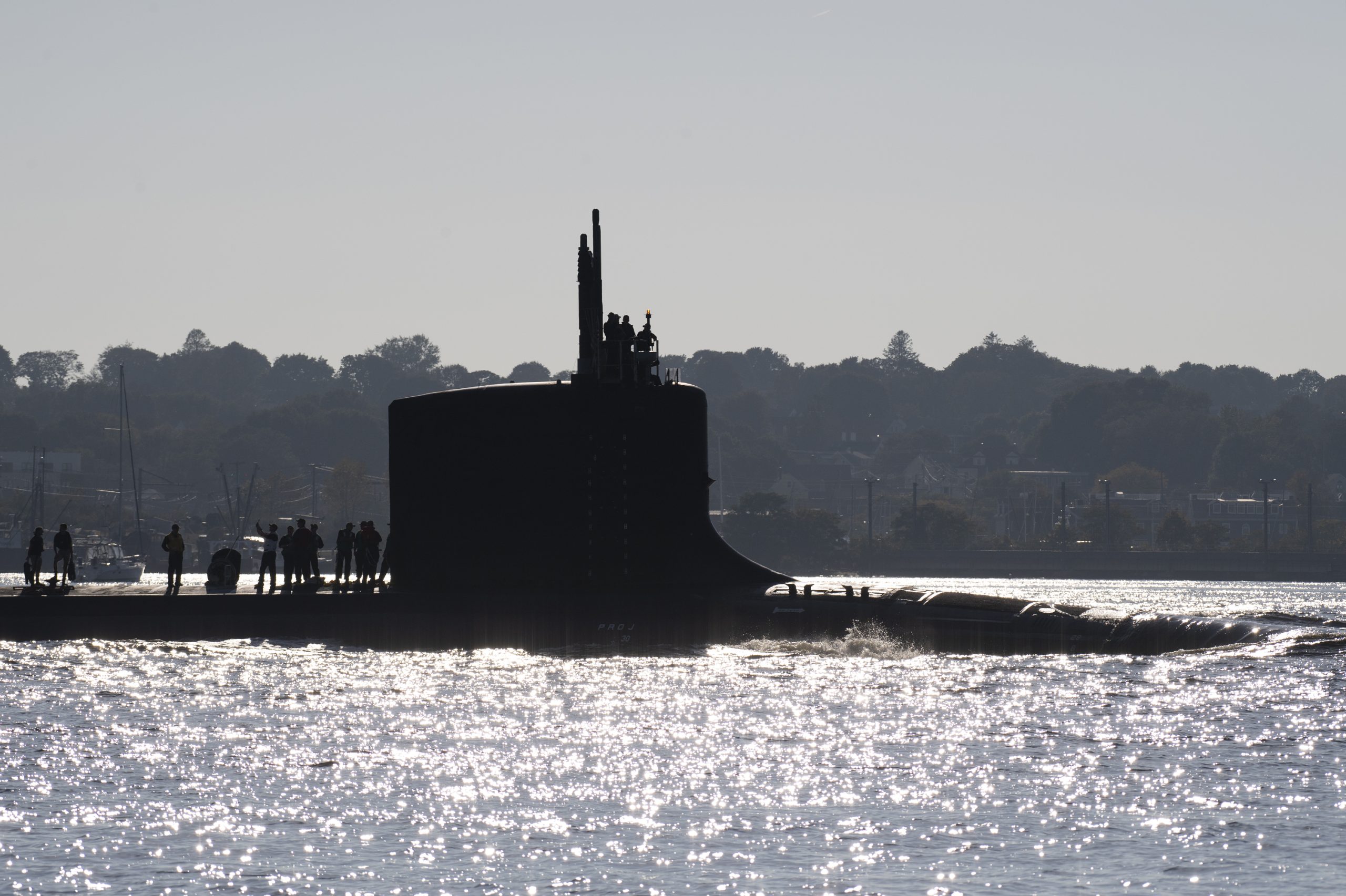
WASHINGTON, D.C. – Congress is backing a Marine proposal to continue the San Antonio-class amphibious warship line with $1 billion in incremental funding for a proposed LPD-33, according to the Fiscal Year 2024 conference authorization bill.
For two years in a row, the Marine Corps has placed a request for $1.7 billion in funds for a Flight II San Antonio-class warship on the top of its unfunded wish list.
The request from the Marines comes while the Navy has placed a so-called “strategic pause” on new amphibious ship construction, pending a study from the Office of the Secretary of Defense assessing whether the Flight II LPD is the most cost-effective platform to meet amphibious needs. The halt to the program’s line has placed existing LPD-33 advanced procurement in limbo.
“This is a pretty strong message [to OSD],” Rep. Rob Wittman (R-Va.) told USNI News following remarks at the U.S. Naval Institute’s Defense Forum Washington.
“We’re funding LPD-33 and the appropriators are going to do the same. This reiterates the importance of a 31-ship amphibious fleet.”
Further supporting amphibious shipping, the bill includes a Senate proposal that will fence off money from the Secretary of the Navy “until the Secretary submits a 30-year shipbuilding plan that meets the statutory requirement to maintain 31 amphibious warships.” In addition to the long-term requirement the bill also calls on the Navy to maintain 24 amphibious warships in the short term.

To that end, the bill prevents the Navy from decommissioning the amphibious warships USS Germantown (LSD-42), USS Gunston Hall (LSD-44) and USS Tortuga (LSD-46). Those ships were slated for decommissioning in Fiscal Year 2023.
The language in the bill called for the Marine Corps to have more oversight of amphibious shipping requirements and highlighted the ongoing requirements churn on the Landing Ship, Medium.
“The commandant called for a program of 35 LSMs to support operations of three Marine Littoral Regiments, with affordability and speed to delivery as key considerations,” reads the draft bill language.
“However, the Navy’s program only includes 18 LSMs, a number insufficient to provide continuous support for two Marine Littoral Regiments.”
On Thursday, assistant commandant of the Marine Corps Gen. Christopher Mahoney repeated the Marine Corps’ pitch for amphibious shipping as part of its Force Design 2030 concept.
“Statutorily mandated, risk assessed [total] of 31 L-class ships is the minimum structural foundation to provide that flexibility, those capabilities to the combatant commander,” Mahoney said at DFW.
The bill authorizes a shipbuilding budget of $32.9 billion – about $100 million less than the Fiscal Year 2024 Navy budget request.
The bill authorizes a Columbia-class nuclear ballistic missile, two Flight III Arleigh Burke-class guided-missile destroyers, two Virginia-class nuclear attack submarines, two Constellation-class guided-missile frigate and $815 million for a John Lewis-class fleet oiler for a total of eight battle force ships authorized in the draft.
The committee also cut about $1.4 billion the Navy wants to procure a new submarine tender for the fleet. Instead, lawmakers authorized an incremental procurement starting with $248 million in FY 2024 for the tender. The bill also authorized $142 million for two used merchant ships to augment sealift and $62 million for two LCU 1700 landing craft.

Additionally, the bill includes language that allows the transfer of two Virginia-class nuclear attack boats to the Royal Australian Navy as part of the overall AUKUS construct.
Sen. Roger Wicker (R-Miss.), the ranking member of the Senate Armed Services Committee, expressed his support for AUKUS in a statement.
“I appreciate that much important work of implementing AUKUS can now begin, including Australian contractor training and the crucial sharing of advanced technology under Pillar II,” Wicker said. “Congress now must act quickly on the supplemental funding for the U.S. submarine industrial base. Our defense industrial base is already behind where it needs to be. We are producing about 1.2 attack submarines a year rather than the 2.3 necessary to fulfill the AUKUS agreement and meet U.S. requirements.”





